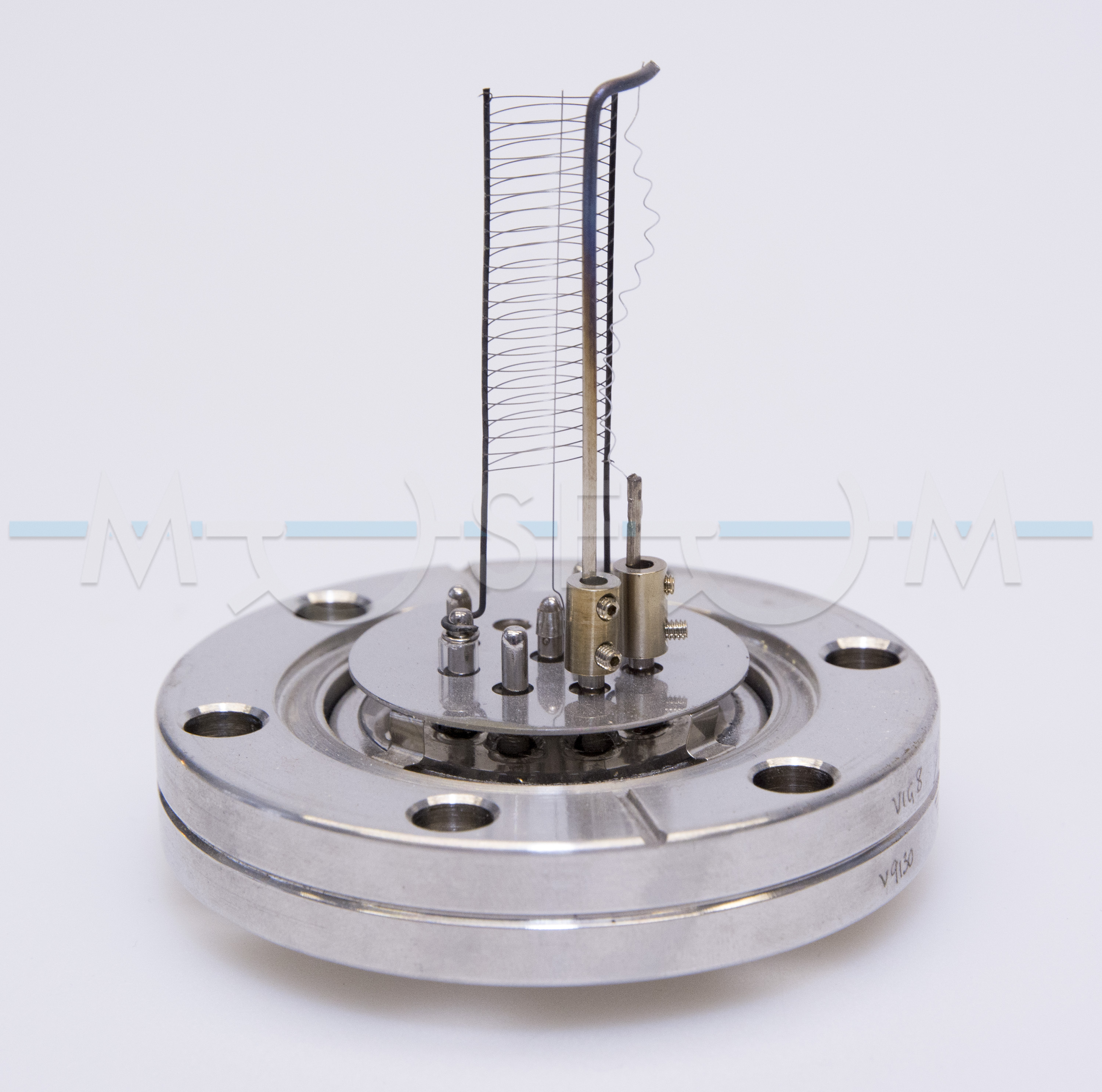Categories of exhibits
Hot-filament ionization gauge
Exhibit no. 234
Ionization gauge is a device that uses electron ionization to measure low-pressure (vacuum).
The gauge is a triode with the heated filament serving as a cathode. The electrons emitted from the heated cathode are attracted to a helical grid by a DC potential. Most of the electrons pass through the grid and collide with gas molecules. The positive ions formed in this way are attracted to the central ion collector wire by a negative voltage applied to it. When the temperature is constant, the gauge reading is proportional to pressure. The gauge is sometimes called a hot-filament gauge or Bayard–Alpert gauge and it is the widely used for the region from 10−3 to 10−10 Torr.
Pictured is nude gauge with a mounting flange. It provides unrestricted conductance to the vacuum chamber, the reduced outgassing due to the minimal surface area of its surroundings, and the higher bakeout temperatures that it can handle. This gauge was manufactured by Vacuum Generators (Hastings, England; now VACGEN) and served in the sector mass spectrometer ZAB-EQ produced by VG Analytical LTD. in 1986
Wikipedia: Hot filament ionization gauge
Wikipedia: Pressure measurement





